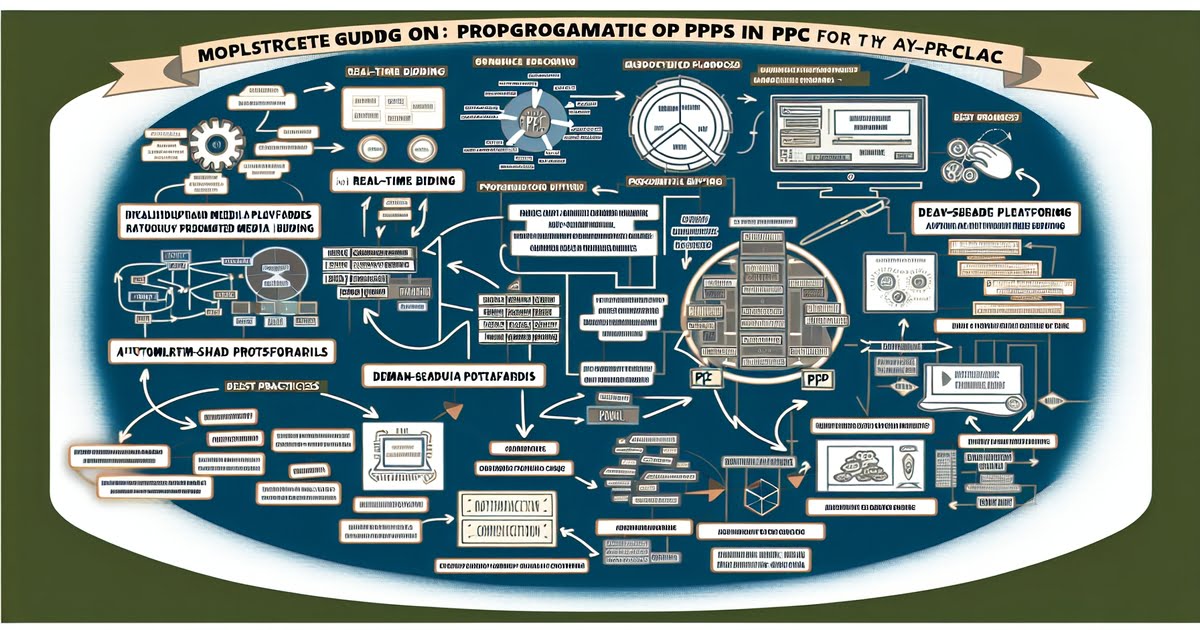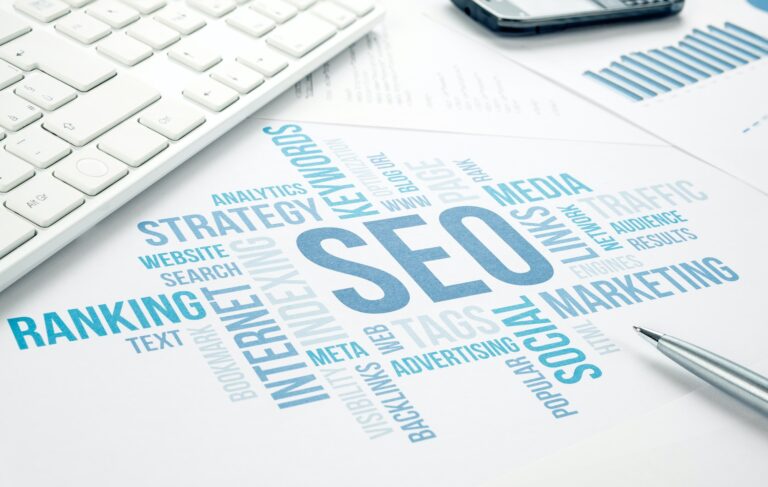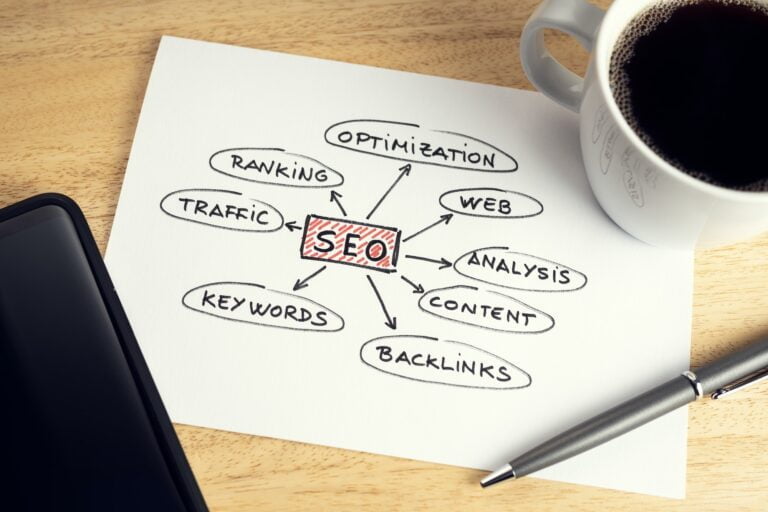Diving into the digital marketing ocean, you’ll find traditional PPC (pay-per-click) strategies floating on the surface. But lurking beneath online advertising, there’s a powerful current changing the game: programmatic buying in PPC, impacting content marketing, social ads, and advertising budgets. Unlike its manual counterpart where every bid is a calculated guess, programmatic buying harnesses algorithms and machine learning to place ads more efficiently. This means your ads not only reach their target audience but do so at the optimal time and cost. It’s like having a smart assistant who knows exactly when and where your customers are online, making every penny of your ad spend work harder for you. Let’s explore how this innovative approach can turbocharge your digital advertising strategy.
Key Takeaways
- Embrace programmatic buying in PPC to leverage automation and data-driven decisions for more efficient and effective ad campaigns, enhancing targeting precision and optimizing ad spend.
- Understand the fundamental differences and synergies between PPC and programmatic buying to fully exploit their benefits, including increased reach and improved ROI.
- Implement strategies that focus on audience targeting, real-time bidding, and creative optimization to stay ahead in the competitive digital advertising landscape.
- Explore various platform choices for programmatic PPC, considering their unique features and compatibility with your advertising goals to maximize campaign performance.
- Allocate your budget wisely by understanding the cost structures of programmatic buying, including potential savings through more targeted ad placements and better conversion rates.
- Utilize advanced analytics and data-driven decision-making to continuously refine your programmatic PPC campaigns, ensuring they are aligned with your marketing objectives and audience needs.
- Prioritize ad fraud prevention and brand safety measures to protect your investment and maintain the integrity of your brand in the digital ecosystem.
- Stay informed about the future trends in programmatic PPC, including the integration of AI and machine learning, to remain competitive and innovative in your approach.
Understanding PPC and Programmatic Buying
PPC Basics
Pay-per-click (PPC) is a digital advertising model. Advertisers pay each time someone clicks on their ad. This method drives immediate traffic to websites. It’s like flipping a switch for online visibility.
PPC relies heavily on keywords. Advertisers choose keywords related to their business. When people search these keywords, the ads appear. It’s essential for targeting potential customers who are looking for specific products or services, ensuring ad relevance in the digital ad space and maximizing the benefits of ad inventory.
Programmatic Marketing
Programmatic marketing changes the game with automation. It uses artificial intelligence (AI) to buy ad space efficiently. This means ads get in front of the right people at the right time without manual effort.
One key feature is real-time bidding (RTB). This allows advertisers to bid on ad space in milliseconds as a webpage loads. Also, programmatic marketing excels in audience targeting. It uses data to target users based on behavior and demographics, not just keywords, enhancing ad relevance and optimizing ad buying.
Key Differences
The main difference between PPC and programmatic buying lies in their approaches.
- PPC is more manual with advertisers setting up campaigns themselves.
- Programmatic automates this process, making it faster and often more efficient.
While both aim to place ads effectively:
- PPC focuses on keyword matching, showing ads based on what users type into search engines.
- Programmatic targets specific audiences, using data about user behavior and demographics across various platforms beyond just search engines.
Benefits of Programmatic Advertising in PPC
Efficiency and Automation
Programmatic advertising streamlines the ad buying process. It cuts down on manual tasks. This means ads get placed faster and more accurately. Automation plays a big role here. It allows for ads to be optimized any time, day or night.
Machine learning algorithms make this possible. They ensure money is spent where it works best. This makes every dollar count.
Targeted Strategies
With programmatic buying, you can target very specifically. You use user data to do this. This could include what sites they visit or their online behavior.
If an ad isn’t performing well, you can change your strategy right away. You’re not stuck waiting until a campaign ends to see results.
This approach also lets you reach people across different platforms and devices seamlessly.
Budget Optimization
One of the biggest benefits is how it helps with spending wisely.
- Real-time adjustments mean you don’t overspend.
- Your budget focuses on what’s working at that moment.
- Precise targeting means less money wasted on ads that don’t hit the mark.
You spend more efficiently by focusing on audiences that are likely to convert at times they’re most engaged.
Strategies for Effective Programmatic PPC
Real-Time Bidding
Automation Techniques
Programmatic buying in PPC thrives on automation. Algorithms play a crucial role here. They decide the best bid strategies without human intervention. This ensures your ads are bought at optimal prices.
Automated creative optimization is another game-changer. It tweaks your ads to ensure they resonate more with viewers. Imagine an ad that changes its message based on who’s looking at it—pretty smart, right?
Scheduling ads isn’t random either. It’s all about timing them when your audience is most active online. This way, you’re not just shouting into the void.
Data Analysis
Data analysis turns numbers into insights. It shows how well campaigns perform and what audiences prefer.
These insights help fine-tune future campaigns for better returns on investment (ROI). They also reveal trends and opportunities within different market segments.
Targeted Advertising
Audience Segmentation
Dividing audiences makes messages more personal.
- Demographics, interests, or behaviors can guide this division.
- Tailored messages hit closer to home.
- The result? Higher engagement because you’re speaking their language.
Behavioral Insights
Past actions offer clues about future behavior.
- Analyzing these actions helps predict what users might do next.
- Ads then meet users exactly where they are in their buying journey.
- Personalized messaging boosts conversion rates significantly.
Cross-Device Campaigns
Consistency across devices is key in today’s multi-screen world. Users hop from smartphones to tablets to PCs. Your messaging should follow seamlessly.
Tracking interactions across these devices offers a coherent experience for the user. They won’t feel lost or frustrated by disjointed messages.
Optimizing bids based on how well each device performs can save money and increase effectiveness.
Platform Choices for Programmatic PPC
Google Ads Features
Google Ads stands out in programmatic buying in PPC. It provides tools for keyword research and bidding strategies. These are crucial for targeting the right audience.
It also integrates with Google Analytics. This allows advertisers to analyze performance deeply. They can see how their ads perform and adjust strategies accordingly.
Moreover, Google Ads supports remarketing efforts. Advertisers can re-engage past visitors with targeted messages. This increases the chances of conversion.
Bing and Other Platforms
Bing offers an alternative to Google Ads. It reaches audiences not found on Google. This is important for a diverse strategy.
The cost per click on Bing is often lower due to less competition. This makes it a cost-effective choice for many businesses.
Bing helps expand reach to different demographic groups too. Understanding these demographics can enhance campaign effectiveness.
Paid Search vs Paid Social
Paid search focuses on users actively searching related terms.
- Targets based on active search behavior.
- Effective for immediate needs or solutions.
Paid social targets based on interests and demographics.
- Reaches users not actively searching but likely interested.
- Useful for brand awareness and longer-term engagement.
Choosing between paid search and paid social depends on goals and target audience.
- For direct response campaigns, paid search might be more effective.
- For building brand awareness, consider paid social.
Budgeting for Programmatic PPC Campaigns
Cost Control
After choosing the right platforms for programmatic buying in PPC, managing advertising budgets effectively is crucial. Setting daily budgets is a practical approach to control spending. This ensures that your costs don’t spiral out of control.
Another strategy is using cost-per-acquisition (CPA) bidding. It means you only pay when an action, like a sale or sign-up, happens. This method focuses on results rather than just clicks or impressions.
Monitoring campaigns closely allows for real-time adjustments to bids. This prevents budget overrun and optimizes spend efficiency. Regular checks help identify areas where costs can be cut without sacrificing performance.
Large-Scale Reach
Programmatic buying extends beyond search engines to vast networks of websites. It offers access to global audiences efficiently and without the need for manual negotiations with each site.
This approach also uncovers long-tail opportunities with lower competition but high potential value. By targeting specific niches across numerous sites, advertisers can reach more interested users at a lower cost.
Expanding reach through programmatic buying enables brands to connect with diverse audiences worldwide easily. The key lies in leveraging technology to find and serve ads where they’ll have the most impact.
ROI Measurement
Tracking direct returns from each ad dollar spent gives clear insights into campaign effectiveness. Conversion tracking goes beyond mere click metrics; it evaluates how well ads lead to desired actions by users.
Adjusting campaigns based on ROI data ensures resources are allocated where they’re most effective—maximizing return on investment becomes feasible with detailed analytics provided by programmatic platforms.
Dynamic adjustments based on ongoing data analysis keep campaigns aligned with business goals while optimizing spend across various channels and audiences.
Analytics and Data-Driven Decision Making
Leveraging Data
Programmatic buying in PPC harnesses vast amounts of user data. This data helps create targeted marketing efforts that speak directly to the user’s needs and interests. By collecting details about users’ online behaviors, marketers can craft personalized ads. These ads are more likely to catch attention because they’re relevant to what the user has shown interest in.
Analyzing the customer journey is another critical aspect. It allows for optimizing each touchpoint along the way. If a potential customer frequently visits sports websites, programmatic buying can place ads related to sports gear on those sites. This strategy ensures that the message is timely and contextually appropriate. Personalization goes a step further by tailoring ads based on historical interactions with your brand, making them even more compelling.
Machine Learning Insights
Machine learning plays a pivotal role in predicting future consumer behavior using historical data analysis. This technology enables continuous improvement of campaign performance without manual intervention every step of the way. Algorithms learn from past ad campaigns’ successes and failures, adjusting strategies accordingly.
One significant advantage here is identifying patterns humans might miss within large datasets—a crucial factor given today’s information overload online. For instance, machine learning might uncover that certain ad colors or phrases resonate more with your target audience during specific times of year or days of the week.
Conversion Rate Optimization
Testing different elements within your ads is fundamental for conversion rate optimization (CRO). Programmatic buying makes it easier to experiment with various CTAs, images, and copy to see which combinations perform best.
Reducing friction in the conversion process on landing pages ensures users have a smooth experience when they click through an ad—this could mean simplifying forms or speeding up page load times. A/B testing is extensively used here as well; by comparing two versions of an ad or landing page side-by-side, you can clearly see which one converts better and apply those lessons moving forward.
Ad Fraud Prevention and Brand Safety
Identifying Fraud
Programmatic buying in PPC can significantly boost efficiency. Yet, it faces challenges like ad fraud. Advanced tools play a crucial role here. They detect fraudulent clicks or impressions effectively. This protection is vital for advertisers who invest heavily in digital campaigns.
Fraudulent activities drain budgets without any real benefit. Implementing robust detection mechanisms safeguards these investments. It ensures that ad spend goes towards genuine interactions only.
Continuous monitoring of traffic quality is another essential step. It helps identify anomalies quickly, preventing potential losses early on. By staying vigilant, advertisers can maintain the integrity of their campaigns.
Ensuring Safety
Brand safety is paramount in programmatic buying in PPC as well. Collecting user data requires adherence to strict privacy regulations, such as GDPR. This compliance not only protects users but also enhances brand trust and loyalty.
Using secure platforms and protocols shields sensitive information from breaches or misuse. Advertisers must be cautious about where their ads appear too. Placing ads next to controversial or harmful content can damage brand reputation severely.
To avoid such risks, blacklisting certain sites becomes necessary. This approach prevents ads from showing up on undesirable web pages. It’s a proactive measure to maintain brand integrity across all advertising efforts.
Future of Programmatic PPC
Voice Search Optimization
Programmatic buying in PPC is evolving. One significant trend is voice search optimization. This involves using natural language phrases as keywords. People speak differently than they type. So, ads need to reflect this change.
Voice searches often start with “how,” “what,” or “why.” Optimizing content for these question-based queries can boost visibility. With more homes owning smart speakers, adapting strategies is crucial.
For instance, a person might ask their device about the best coffee shops nearby. If your ad uses conversational phrases related to coffee shops, it’s more likely to show up.
Mobile Optimization Strategies
Mobile devices dominate internet access today. Hence, mobile optimization in programmatic PPC cannot be overlooked.
Ads designed for mobile should load quickly and look good on small screens. Fast-loading pages keep mobile users engaged longer and reduce bounce rates.
Also, understanding how people use their devices helps tailor bids effectively.
- During commutes, shorter attention-grabbing ads work best.
- In evenings, longer informative ads may perform better as users have more time to engage.
Different times of day see different usage patterns on mobile devices. Adapting bidding strategies accordingly can lead to higher engagement rates and better ROI from campaigns targeted at mobile users.
Reactive Marketing Techniques
The digital landscape changes rapidly. Reactive marketing techniques allow advertisers to adjust quickly based on current events or trends.
Using sentiment analysis tools can help gauge public mood after specific events occur. This insight lets marketers tweak messages so they resonate better with audiences’ current feelings or concerns.
Dynamic creative optimization (DCO) plays a vital role here too. It allows ad content to be automatically updated for relevance during unfolding situations or trending topics.
Imagine reacting instantly with supportive messages during community challenges or tailoring offers that match sudden shifts in consumer behavior due to news events. This agility makes programmatic buying even more powerful by ensuring messages stay relevant and timely.
Challenges and Considerations
Industry Issues
Programmatic buying in PPC is not without its hurdles. One major concern is privacy and data security. With the rise of digital advertising, protecting user information has become paramount. Advertisers must ensure that their programmatic strategies do not infringe on privacy rights.
Changing regulations also pose a challenge. Laws like GDPR in Europe and CCPA in California have set new standards for data usage. Advertisers need to stay informed about these changes to avoid penalties.
Brand safety is another significant issue. Automated ad placements can sometimes place ads next to inappropriate content. This risks damaging a brand’s reputation.
Transparency and Control
Advertisers demand transparency from platforms regarding ad placements. Knowing where your ads appear is crucial for assessing campaign effectiveness and ensuring brand safety.
Control over audience data usage by third parties is also vital. Advertisers want assurance that their customer’s information is handled responsibly.
Lastly, there’s a call for visibility into algorithmic decision-making processes used in programmatic buying. Understanding how decisions are made helps advertisers optimize their campaigns better.
Summary
Diving into the world of programmatic buying in PPC is like unlocking a treasure chest of opportunities for your digital marketing strategy. We’ve journeyed through the nuts and bolts of PPC, uncovered the goldmine of benefits that programmatic advertising offers, and navigated through strategies, platforms, budgeting, analytics, ad fraud prevention, the future landscape, and the hurdles you might face. It’s clear that leveraging programmatic buying can catapult your PPC campaigns into new heights of efficiency and effectiveness. But remember, it’s not just about setting sail; it’s about steering your ship with data-driven decisions and a keen eye on evolving digital seas.
Ready to take the plunge? Don’t let the vast ocean of programmatic PPC intimidate you. Start small, test the waters with what you’ve learned today, and gradually expand your horizons. Your brand’s visibility and engagement are just a programmatic campaign away from skyrocketing. Dive in, the digital tide waits for no one!
Frequently Asked Questions
What is programmatic buying in PPC?
Programmatic buying in PPC automates the ad purchasing process, using algorithms and data to target the right audiences at optimal times. It’s like having a super-smart robot that knows exactly when and where to place your ads for the best results.
How does programmatic advertising benefit my PPC campaigns?
Think of programmatic advertising as your campaign’s personal trainer. It boosts efficiency, targets more precisely, and optimizes spending. Essentially, it helps your ads get into shape by ensuring they’re seen by the right eyes without wasting dollars on the wrong crowd.
What strategies should I use for effective programmatic PPC?
To nail programmatic PPC, mix smart targeting with real-time bidding. Imagine you’re fishing; these strategies help you know where the fish are biting and how much bait (or budget) to use. This way, you’re always one step ahead.
How do I choose the right platform for my Programmatic PPC?
Choosing a platform is like picking a team for dodgeball; consider its strengths, weaknesses, and compatibility with your goals. Look for platforms that align with your audience targeting needs and budget while offering robust analytics tools.
What’s crucial about budgeting for Programmatic PPC campaigns?
Budgeting here is all about balance—like walking a tightrope while juggling balls labeled “reach,” “efficiency,” and “results.” Start small if needed but focus on allocating enough funds to test different strategies without breaking the bank.
Why are analytics important in Programmatic Buying?
Analytics in programmatic buying act as your campaign’s GPS system—they guide decisions based on performance data rather than guesswork. By understanding what works (and what doesn’t), you can steer towards success more confidently.
Can Ad Fraud be prevented in Programmatic Advertising?
Absolutely! Preventing ad fraud is akin to installing a top-notch security system—it requires vigilance and smart technology choices. Optimize brand safety measures by selecting reputable platforms and employing advanced verification tools to keep imposters at bay.









